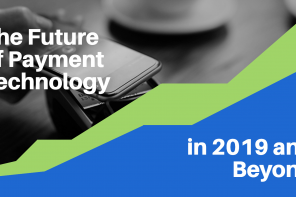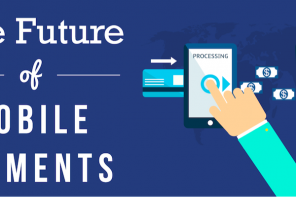Staying relevant as an independent software vendor (ISV) is challenging as technology trends shift faster each year. The race to stand out is intensifying in 2019.
To stay ahead of the curve, ISVs must note the trends gaining traction across the payments ecosystem. Besides customer acquisition and retention, payments are one of the most important aspects of running a successful business. Helping achieve better customer relations is directly correlated with a smooth payment process.
To help you lead the ISV pack, we’ve broken down 7 payment trends to look for in the year ahead. These trends have been gaining momentum for the past few years, but we’ll break down just why they are worth paying attention to in 2019 and beyond.
Mobile Payments
Mobile, mobile, mobile has been the name of the game since smartphones got more sophisticated on the payment side of the equation. There’s been plenty of skepticism as to when exactly mobile payments would take off, and 2019 could be the year the projections finally live up to the hype. Thanks to the widespread adoption of open APIs, banks and retailers have started embracing mobile as part of their regular payment offerings.
With Apple’s launch of Apple Pay Cash and an increased number of consumers shopping online each year, the need to truly invest in mobile payment methods has finally hit home. Smartphone penetration is at 77% in the U.S., which means there’s a whole lot of consumers ready to shop and pay online. Those same shoppers want it quick and easy, which will pave way for more mobile payment adoption. ISVs who haven’t already jumped on the mobile bandwagon should consider doing so in 2019.
API Payments
API has been a bit of a buzzword in the past few years, and now 2019 is the time for open APIs to gain more traction. APIs has gained popularity in the software development community as more businesses want to integrate payment technology into their own websites and apps. This has created an immense opportunity for ISVs who want to invest in payment solutions that offer more flexible, secure payment methods — thanks to a rise in the open API marketplace.
The open API programming market has created immense opportunities for developers of all levels, and your business should take note of how to leverage payment API solutions to gain traction with customers. API payments allow for businesses to integrate payment technology into their own systems better and faster than ever before. 2019 is the year to embrace smoother integration of innovative payment methods as a way to attract more customers.
Biometric Payments
The smartphone market has set the tone for why biometric payments are the future. In 2019, this trend should continue to make its mark in the payment technology market. With fingerprints and facial recognition the new norm for unlocking smartphones, it should be no surprise that biometrics is the next big thing.
ISVs should be investing in technology that allows their customers to integrate biometric payments into their own payment experiences. There will be 770 million biometric authentication apps downloaded annually by 2019, according to Juniper Research. As security continues to be top of mind for financial institutions and businesses, having innovative ways to pay that doesn’t involve sharing credit card credentials online. Biometric payments are part of this next wave of payment trends worth paying attention to for ISVs who want to deliver the next level of customer experience.
Chip-Card (EMV) Technology
Visa announced in a report last fall that counterfeit fraud at merchants that were EMV compliant for chip card technology reduced fraud by 75 percent. As more businesses work toward keeping their customers’ data secure, the focus in 2019 will be all about better methods to encrypt data. EMV integration for ISVs will help your clients provide more secure payment processing, and help protect everyone’s bottom line. The EMV migration deadline is long past and those who haven’t caught onto this trend should look into playing catch up quickly. With rising fears of card data breaches, achieving better, faster EMV integration for ISVs matters now more than ever.
Wearable Payments
This is another trend that’s stuck around for the past few
Contactless Payments
As mentioned above, the number of devices capable of making payments — both in-store and online — without needing a physical credit card on hand is growing each year. Smartphones allow consumers to complete purchases with a simple click of a button or fingerprint scan, and this has rapidly evolved the face of the payments ecosystem. In the U.S. alone, it’s estimated the number of proximity mobile payment users will top 60 million in 2019. As more merchants adopt terminals with Near Field Communication (NFC) technology, contactless payment methods will continue to gain traction.
At the physical point of sale, the next big trend to watch for is contactless payment cards. While EMV chip card adoption continues to strengthen in the U.S., across the pond in the U.K. the trend is all about contactless. This trend has caught on as a way to pay in major U.S. cities for public transportation and is quickly gaining ground among major U.S. banks. As adoption of contactless payment cards catch on, ISVs should be prepared to have their payment technology equipped to accept these methods.
Secure Payments
Each of the above payment methods have become trends because of one common thread: Better security. Data breaches continue to run rampant across merchants’ payment terminals and businesses are catching on that data security should be top of mind for anyone wanting to protect their customers’ information (and their bottom line). ISVs must look for payment solution with end-to-end encryption (E2E) capabilities that also tokenize data.
Today, being savvy about security is being proactive about preventing fraud. In 2019 and beyond, adopting innovative ways to pay will boil down to the ability to safeguard IT systems from the rapidly growing number of hackers looking to pray on businesses. Above all else, security will drive the above trends across the ISV and merchant ecosystem.




